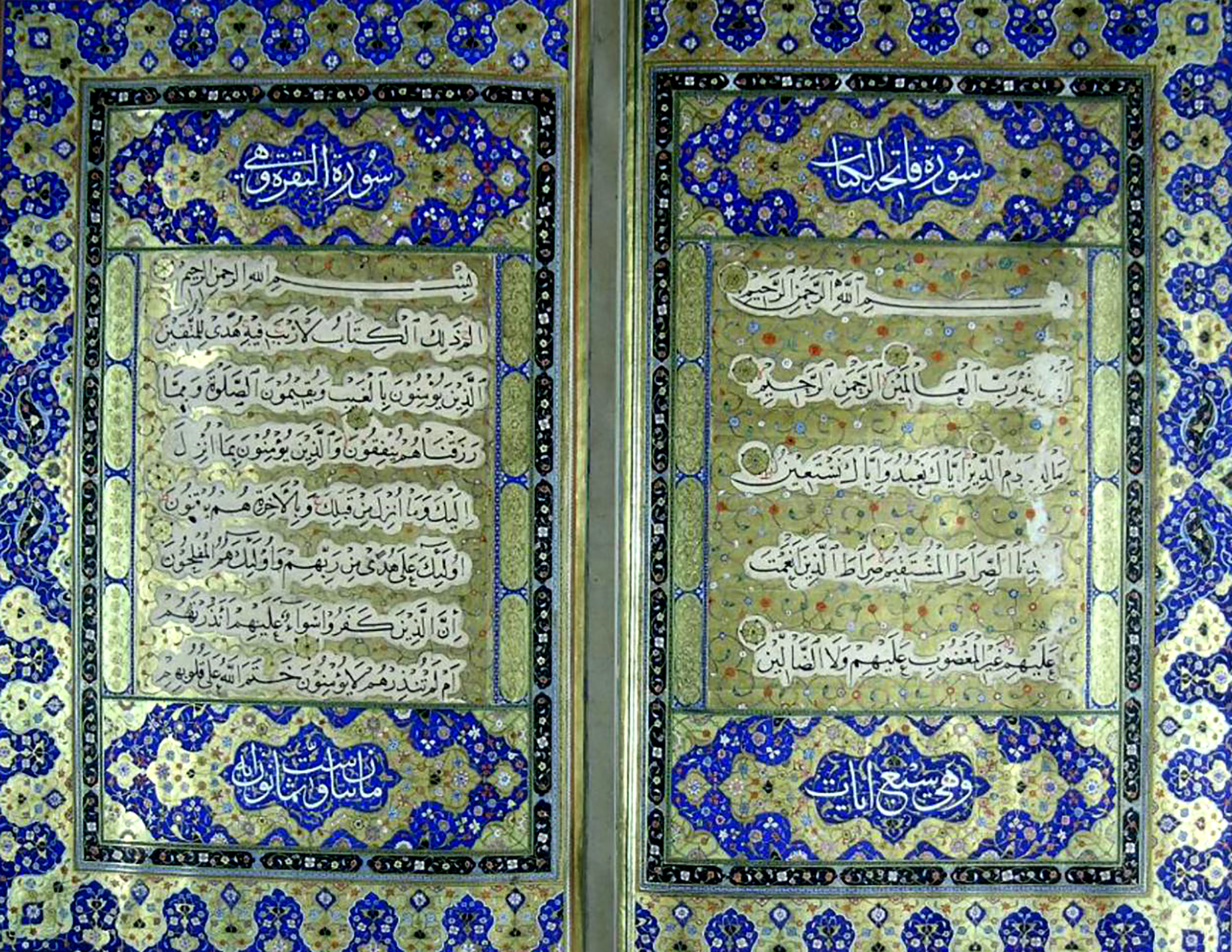Analysis of Ornamental Design Systems in the Qur’ān by Yaqut Al-Mustasimi
Abstract
 Abstract Views: 0
Abstract Views: 0
The current study aimed to examine the ornamental design systems employed in Qur’ānic manuscripts, focusing on the celebrated copy of the Qur’ān produced by Yaqut al-Mustasimi in 690 AH/1291 CE, a distinguished exemplar of the Baghdad School. The research addressed the problem of how illuminators developed systematic ornamental frameworks that balanced aesthetic harmony with the codicological functions of the manuscript. Adopting a descriptive-analytical method, the study investigated selected folios noted for their preservation, visual clarity, and representative artistic value—particularly the introductory pages and opening surahs. Through detailed structural analysis, five distinct ornamental systems were identified. These included quadrilateral symmetry, bilateral symmetry, radial organization, diffusion through modular repetition, and combined multiple frameworks. The findings demonstrated that these systems were neither arbitrary nor purely decorative, however, grounded in geometric logic and deliberate design methodology. A notable feature is the integration of symmetry with controlled asymmetry, particularly in double-page spreads, which ensured continuity between facing folios and reflected advanced spatial planning. The research highlighted how Baghdadi illuminators, constrained by the prohibition of figural imagery, transformed vegetal and geometric motifs into highly sophisticated compositional systems. These strategies not only defined the visual identity of the Abbasid Qur’ān but also established a legacy that shaped later Islamic manuscript traditions. By articulating the methodological foundations of these systems, the study contributed to a deeper understanding of Islamic manuscript design. Additionally, it provided a framework to analyze ornamental logic in historical and contemporary Qur’ānic art.
Downloads
References
Abdul, Aziz., and Mahytab Hassan El-Banna. “A Criteria for Balancing between Movement and Stillness in Islamic Decorations (Arabic Calligraphy Heritage Applied in the Field of Metal Furniture),” International Design Journal 14, no. 4 (2024): 385–395, https://doi.org/10.21608/idj.2024.358290.
Al-Addal, Samera Ibrahim Kadum. “Planning and Developing the Archaeological Tourist Sites in Baghdad: Al-Mustansiriya School as a Model.” PalArch's Journal of Archaeology of Egypt/Egyptology 17, no. 7 (2020): 12383–12396. https://staff.uokufa.edu.iq/faculty/detail/samerai.AL-ADDAL/
Alami, Mohammed Hamdouni. Art and Architecture in the Islamic Tradition: Aesthetics, Politics and Desire in Early Islam. Bloomsbury Publishing, 2013.
Ali Mahdi, Thalfaa., and Amin Abdel Zahra Yassin. “Isomorphism and Its Approximation in Islamic Art Decorations.” Al-Academy 116, (2025): 109–124. https://doi.org/10.35560/jcofarts1418.
Kolmek, Emine Filiz. “Visual Language of Islamic Arts: An Exploration of Islamic Decorative Arts and Religious Symbolism.” Paper presented at the International European Conference on Interdisciplinary Scientific Research, Lisbon, Portugal, 2025.
Dariyadi, Moch Wahib., Nurul Murtadho, Ibnu Samsul Huda, and Abd Rauf Tan Sri Hassan. “Arabic calligraphy as mosque decoration: architectural significance in Indonesia.” City, Territory and Architecture 12. no. 1(2025): 23, https://doi.org/10.1186/s40410-025-00271-x.
Ghadheb, Mohammed Radhee., Oday Abdulhameed Majeed, and Furat Jamal Hassan. “Undermining the Familiar and Embodiment Content in Arabic Calligraphy.” Journal of Islamic Thought and Civilization 13, no. 1 (2023): 47–58, https://doi.org/10.32350/jitc.131.04.
Hamdy, Rawaa Fadhel., and Fawzia Irhayyim Al-Assadi. “Aesthetic Values in Islamic Ornamentation—Abbasid Architecture as a Model.” Paper presented at the AIP Conf. Proc. 2651, 020073 (2023), https://doi.org/10.1063/5.0106153
Hassan, Furat Jamal., and Ahmad Masher Kakhel. “Theory of Sustainability and Creativity and Its Relationship to Environmental Art & Technological Development in Islamic Architecture in Bosnia and Al-Hersic.” Jordan Journal of Arts 13, no. 2 (2020): 237–250, https://doi.org/10.47011/13.2.5.
Hataf, Ali Hussein., and Mahmoud Shaker Jabr. “The Aesthetics of the Decorative Composition of the Basmalah in Contemporary Arab Painting.” PalArch's Journal of Archaeology of Egypt/Egyptology 17, no. 7 (2020): 3637–3650.
Mahmood, Russul Saad., and Oday Qusay Abdulqader Alchalabi. “The Importance of Classifying the Traditional Mosulian Ornaments in Enhancing the Conservation Process.” Planning 17, no. 5 (2022): 1605–1613, https://doi.org/10.18280/ijsdp.170525.
Marwa, Baydoun., Fadzli Irwan Bin Bahrudin., and Reham Baydoun. “Categorisation of Islamic Wall Decorations in Four Buildings: Visual Analysis and Comparative Study for Stylistic and Historical Contexts.” Journal of Architecture, Planning and Construction Management 14, no. 1 (2024): 94–114, https://doi.org/10.31436/japcm.v14i1.872.
Milwright, Marcus. “Samarra and Abbasid Ornament.” A Companion to Islamic Art and Architecture (2017): 177–196, https://doi.org/10.1002/9781119069218.ch7.
Sajed, Pourmahmoud., and A Fahimifar. “A Study on the ‘Philosophy of Decoration’in the Seljuk Period (5th to 6th Centuries Ce) Emphasizing the Dome of ‘Taj Al-Molk’of the Isfahan Grand Mosque.” SPbU Bulletin. Philosophy and Conflictology 40, no. 2 (2024): 353–364.
Shafiq, Jeanan. “Architectural Elements in Islamic Ornamentation: New Vision in Contemporary Islamic Art.” Art Des. Stud 21 (2014): 11–21.
Sibahi, Haider Kadim, and Furat Jamal Hassan. “Space Efficiency in the Arabic Calligraphy Panel.” Al-Academy, no. 104 (2022): 73-90, https://doi.org/10.35560/jcofarts104/73-90.
Thornton, Jonathan. Applied Decoration for Historic Interiors Preserving Composition Ornament. Vol. 34: US Department of the Interior, National Park Service, Cultural Resources, 1994.

Copyright (c) 2025 Husam Abdulridha Bahiya, Mohammed Radhee Ghadheb, Furat Jamal Hassan

This work is licensed under a Creative Commons Attribution 4.0 International License.

This work is licensed under a Creative Commons Attribution 4.0 International License. Authors retain copyright and grant the journal right of first publication with the work simultaneously licensed under a Creative Commons Attribution (CC-BY) 4.0 License that allows others to share the work with an acknowledgement of the work’s authorship and initial publication in this journal.







